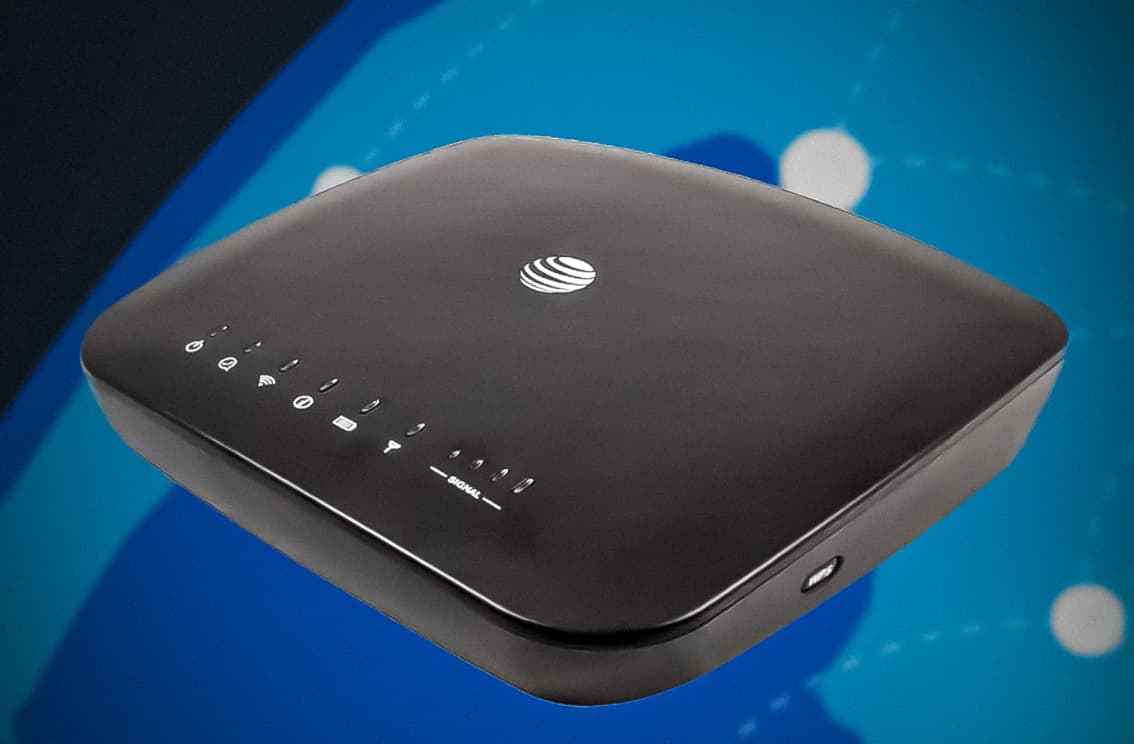Have you noticed the orange indicator on your Cox modem or router blinking? That annoying orange blinking light indicates connectivity problems with your Cox internet.
A blinking orange light typically means your Cox Panoramic gateway, router, or modem has failed to establish a solid connection with the internet servers.
Without a consistent connection, you’ll face frustrating issues like lag and buffering when video chatting, streaming movies, or gaming online.
Cox Modem Router Blinking Orange

In this comprehensive troubleshooting guide, we dive into the various causes behind the blinking orange status light so you can get to the bottom of what’s going on with your finicky Cox hardware.
We’ll also provide clear step-by-step solutions to help restore your internet speeds and reliability.
Inside you’ll discover 10 effective tips to stabilize your home network, ranging from quick power cycling to inspecting cables, updating firmware, and resetting devices. We even look at the best router alternatives if your Cox rental requires replacing.
By the end, you’ll have confidence resolving that pesky blinking orange light on your Cox modem, restoring smooth internet performance across all your household WiFi gadgets.
So read on to finally fix your internet connectivity issues once and for all!
What Does a Blinking Orange Light on a Cox Modem Router Mean?
Cox uses a blinking or solid orange light to indicate the status of your internet connection.
Here is what each state of the orange light signifies:
- Solid Orange: There is a physical connection problem – damaged cables, loose connections, etc.
- Blinking Orange: Your modem router has failed to establish an internet connection due to a weak signal, network issues, etc.
- Blinking Orange and Green: A firmware update is in progress. Once updated, the lights should return to normal.
If you see the orange light blinking on your Cox Panoramic gateway, router, or modem, it typically points to connectivity problems. The next step is troubleshooting to identify the exact cause.
Why Is The Cox Panoramic WiFi Blinking Orange?
There are several potential reasons your Cox modem/router has a blinking orange light instead of the normal white light when working properly:
- Local Internet Outage: Check Cox’s website or contact support to see if there are any issues in your area. If so, you’ll have to wait for the outage to be fixed.
- Overheating: Is your device in a confined space without enough airflow? This could cause overheating and connectivity problems.
- Firmware Issues: An outdated firmware version may be the culprit. Newer updates improve performance and fix bugs.
- Overloading: Too many connected devices can overwhelm the modem router’s bandwidth capacity.
- Physical Damage: Check that all cables are plugged in properly and not loose or faulty. Inspect wires for any damage too.
- Configuration Problems: Resetting your device to factory default settings can help eliminate software issues.
Now let’s go through some step-by-step troubleshooting tips.
How to Fix a Blinking Orange Light on a Cox Modem Router?
Follow these methods to try and resolve the blinking orange light problem:
1. Power Cycle the Cox Modem Router
Start with the basics – turn off your Cox device, unplug it from power, and let it sit for 60 seconds before plugging it back in. This “power cycling” can fix temporary software glitches that cause connectivity problems.
Give your modem router 2-3 minutes after turning it back on to reconnect to the internet. The orange blinking should stop, and you’ll see a solid white light indicating a stable connection.
2. Check for Internet Outages in Your Area
Is your whole neighborhood having issues? Log on to the Cox Outage Map and enter your zip code to see if there are any reports of interrupted service in your location.
You can also contact Cox support to inquire. If they confirm an outage, you’ll simply have to wait for the issue to be resolved by Cox technicians.
3. Inspect All Cables and Connections
Faulty cables and loose connections are common reasons for blinking orange lights and connectivity problems.
- Carefully inspect all cables – Ethernet, coaxial, etc. Replace any that are damaged.
- Check that all connectors and ports are free of moisture, dust, and debris. Clean if needed.
- Make sure all connections are snug – tighten if loose. Wiggling the cable ends in ports helps make better contact.
Be methodical and check all cables going from your wall jack to gateway/modem/router devices. Pay special attention to any splitters in the coaxial cable line.
4. Check if Your Device is Overheating
Is your modem or router feeling hot to the touch? Overheating can lead to reduced performance and connectivity issues.
- Make sure your Cox device has open space around it for ventilation. Don’t cram it into a confined space.
- Keep it away from heat sources like direct sunlight or heating equipment.
- Use compressed air to clear dust from vents to allow for better airflow.
- Consider a laptop cooling pad under your device if all else fails. This will prevent overheating issues.
5. Check for Overloading From Too Many Connected Devices
Do you have lots of devices connected to your home network – game consoles, phones, tablets, computers, smart home gadgets? Having too many WiFi clients can overload a router’s capabilities, resulting in intermittent connectivity problems.
As a test, disconnect ALL devices from your network. Once your modem router reboots and establishes a connection, reconnect devices one by one while observing the lights. If the blinking orange returns when adding a particular device back, that device may be the problem.
If you determine overloading is the root issue, consider upgrading to a more powerful AC1900 or AC2200 modem router that can handle more connected devices simultaneously.
6. Update Your Firmware
Outdated firmware can negatively impact performance or cause compatibility issues.
- Log into your gateway admin interface and check if there is new firmware available.
- Download and install updates to eliminate software bugs.
- Enable automatic updates so your device always runs the latest firmware.
Keep reading for our top alternatives to Cox routers that make firmware upgrades easier.
7. Test With a Direct Wired Connection
Here’s an effective way to isolate whether Wi-Fi problems with your router are causing the blinking orange light:
- Connect your computer directly to the modem router using an Ethernet cable.
- Observe the indicator lights as well as your internet connectivity.
If the direct wired connection works fine, a weak WiFi signal is likely the culprit, not your ISP. In that case, explore ways to boost WiFi coverage in your home.
8. Factory Reset Your Cox Modem Router
Reverting settings to default often resolves software issues that cause blinking orange lights:
- Locate the tiny reset button hole on your device.
- Use a paper clip to press and hold for 30+ seconds until the lights turn off.
- After 2-3 minutes when the lights turn back on, run through the setup wizard again.
Note: Resetting erases all existing wireless settings and passwords, so you’ll need to set up your WiFi network again.
Still, seeing a blinking orange light after the reset? Contact Cox support for advanced troubleshooting.
9. Contact Cox Customer Service for Additional Troubleshooting
Explain the ongoing blinking orange light issue. Cox will walk you through further tests to isolate the problem:
- Checking signal levels
- Testing component replacements
- Sending a technician if necessary
If all else fails, they can help process a replacement modem router. Communicate clearly to get satisfactory results from Cox support.
10. Purchase a New Third-Party Modem Router
If you rented a Cox gateway device, years of wear eventually take a toll. If a certified Cox technician verifies your hardware is faulty and unable to maintain a consistent internet connection:
- Consider upgrading to a brand new third-party router rather than another Cox rental:
- Better performance and WiFi coverage
- No rental fees adding up monthly
- Greater customization and security
- Review our top recommendations for reliable alternatives
- Just ensure any new router is approved for use on Cox’s network
Investing in the robust WiFi router that you own often delivers the best long-term performance and value.
Cox Panoramic WiFi: How Does It Work?
Now that you know how to troubleshoot blinking orange lights, let’s provide some helpful background on Cox’s Panoramic WiFi…
Cox combines a modem, router, and WiFi access point into one sleek Panoramic Gateway device to save space and cables. It establishes your home’s internet connection plus creates the local WiFi network your devices connect to.
Key Benefits:
- Dual-band WiFi – Panoramic gateways broadcast signals on both 2.4GHz and 5GHz frequency bands simultaneously. This prevents congestion and ensures backward compatibility.
- WiFi Pods – These mini signal boosters plug into any power outlet to augment WiFi coverage areas. No running cables are required!
- Mobile App – Monitor your home network usage and connected devices remotely via Cox’s Panoramic app.
The combined modem + router gateway allows self-installation vs waiting for a technician to set up separate components. However, the tradeoff is less flexibility in swapping upgraded parts individually later down the road.
Let’s compare a few well-rated standalone routers as alternatives.
Top 5 Cox Router Alternatives in USA 2024
Rather than renting Cox’s gateway with recurring fees, buying your high-performance router allows greater customization and long-term savings.
Key Factors When Selecting an Alternative Cox Router:
- Speed – Match your Cox plan’s maximum speeds to fully utilize your bandwidth.
- Approved for Cox – Ensure any third-party router supports all of Cox’s settings.
- WiFi Coverage – Robust signal strength for all areas of your home.
- Mesh Capabilities – Extend coverage by interlinking satellite nodes.
- Security – Make sure your network and data are fully secured.
Here are 5 top-rated router picks guaranteed to work on Cox home internet plans:
| Router Model | Max Speed | Key Benefits |
|---|---|---|
| Netgear Nighthawk RAX120 | AX6000 | Blazing fast tri-band speeds up to 6 Gbps |
| Asus RT-AX86U | AX5700 | AiMesh support for flexible whole home WiFi 6 coverage |
| TP-Link Archer AX73 | AX5400 | OFDMA and 8 high-gain antennas provide expansive WiFi throughput |
| Linksys Atlas Max 6E | AXE8400 | Next-gen WiFi 6E with speeds over 8.4 Gbps |
| NETGEAR Orbi Quad-Band Mesh | AX4200 | Dedicated 4.2 Gbps 5Ghz backhaul between router and satellite |
All options above are proven to deliver excellent performance when installed as replacements for Cox leased equipment. Most come packed with advanced features tailored towards home networking.
We recommend the budget-friendly TP-Link Archer AX73 as a reliable way to ditch rental fees long-term while enjoying buffer-free 4K streaming and gaming across multiple devices.
Be sure to check any prospective router purchase against Cox’s approved modems list just to be safe. Some ISPs use unique firmware that only works with certified equipment.
FAQs on Cox Modem Router Blinking Orange:
Here are answers to some common queries regarding blinking orange lights on Cox hardware:
- What’s the difference between a modem, router and gateway?
- A modem connects to your ISP to receive the internet signal and convert it into data for devices.
- A WiFi router takes the signal from your modem and broadcasts it wirelessly to create your home network.
- A gateway combines the modem and router into one device for simpler setup.
- Why does my Panoramic Wifi app not find my network?
If your mobile app doesn’t detect the network, it likely points to bigger connectivity problems – double check all cabling and that indicator lights return solid after rebooting the hardware.
- How many pods do I need?
The number of WiFi pods required depends on the size of your home. Most find 2 or 3 pods placed throughout larger houses provide sufficient signal amplification.
- Can I use any router on Cox Internet?
No – Cox only allows certain certified routers to connect to their network infrastructure. Always verify a given model is on Cox’s compatibility list before purchasing.
- Why is my router overheating?
Limited ventilation causes router motors to work harder as heat builds up internally. Keep your device centered in open spaces to allow a natural airflow. Clean dust buildup too.
More Router Blinking Guides:
- Why is My Verizon Router Blinking Blue
- AT&T Uverse Broadband Blinking Red
- Verizon Internet Gateway Blinking White Light
- Jio Fiber Red Light Blinking
- Google Fiber Jack Blinking Red
- Spectrum Modem Blinking Blue and White
Conclusion:
A blinking orange light on your Cox modem router or gateway is frustrating, but resolving connectivity issues is manageable with methodical troubleshooting:
- Rule out simpler fixes like rebooting or inspecting wiring.
- Determine if overheating, overloading, or firmware bugs are the root cause.
- Reset or replace malfunctioning components preventing stable uptime.
- Consider a more robust stand-alone router instead of rented gateways.
Following this guide’s structured tips for diagnosing your blinking orange light delivers the confidence you need to get your network humming again.
Soon you’ll be enjoying buffer-free calls, gaming, and 4K streaming across all your household WiFi devices.



